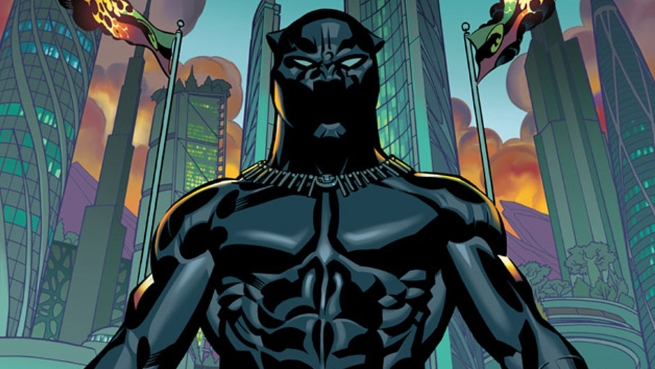Marvel Comics just launched a new Black Panther series, written by Ta-Nehisi Coates (that’s right, the well-known journalist and author of New York Times bestseller Between The World and Me) and drawn by Brian Stelfreeze.
For those of you who aren’t familiar with the character, he was created by Stan Lee and Jack Kirby in the 1960s — as a black superhero, he stood out at a time when comics were a lot whiter.
White characters still dominate the superhero world, but that’s beginning to change, thanks in part to Marvel characters like the Kamala Khan incarnation of Ms. Marvel and the Miles Morales incarnation of Spider-Man. Which is great, but how does the Black Panther stand out now, when he’s no longer the black superhero?
Well, Stelfreeze said he’s still “definitely the OG of black superhero characters.” He also pointed out that from his debut, the character was noteworthy as the king of a (fictional) African nation, Wakanda: “He wasn’t a prisoner, he wasn’t someone’s sidekick or something like that, he was introduced as a character of majesty.”
Series editor Wil Moss suggested that since Black Panther no longer has to “carry that burden of being the only black character in the line,” the story can deal more with Wakanda, its politics and how the character reacts to a rebellion that threatens his rule.
“What Ta-Nehisi is doing, he’s charging me with making Wakanda a city that you recognize, that you can go to,” Stelfreeze added. “You not only get the feeling of the country, you get the feeling of the people.”
For a nonwhite superhero fan like me, it’s also exciting to see a Black Panther comic that’s written and drawn by black creators. When I asked whether hiring a diverse lineup of writers and artists is important to Marvel, Moss said that it’s more about finding the right talent who can tell the best stories. At the same time, he acknowledged that for a character like Black Panther, bringing on black creators is “natural” and represents the comic “finally catching up a bit.”
“Marvel just wants to reflect our audience, our readership, our talent pool,” he said. In his eyes, Coates was the right person for the job, and not just because of his high-profile writing about race in America: “He’s definitely a guy who knows comics.”
Also giving the title a boost: Black Panther will be featured in the upcoming blockbuster Captain America: Civil War, and he’ll headline his own film in 2018.
Moss said the comics are very much a separate story from the movies, but they’re also aiming to make the title accessible to new readers. (I’ve read the first issue, and I think they’ve succeeded — Coates’ writing is dense and complex, but it also catches you up as it goes along.)
I also wondered how Stelfreeze (who created some of the most striking comic book covers of my childhood for Batman: Shadow of the Bat) is adapting his art style as digital comics become increasingly important.
It turns out that he still thinks of comics as “primarily a print medium,” and he draws with print readers in mind. At the same time, Moss said that thanks to digital distribution, Black Panther could reach a lot of new readers.
“Ta-Nehisi has such a large audience outside of comics, and with digital, we can reach anybody who doesn’t know where to find the comic store nearby,” he said.
